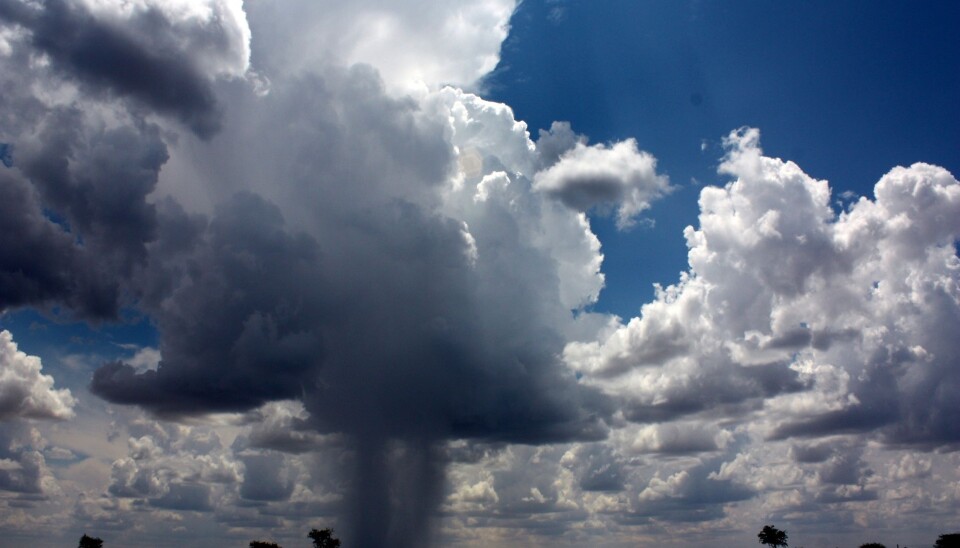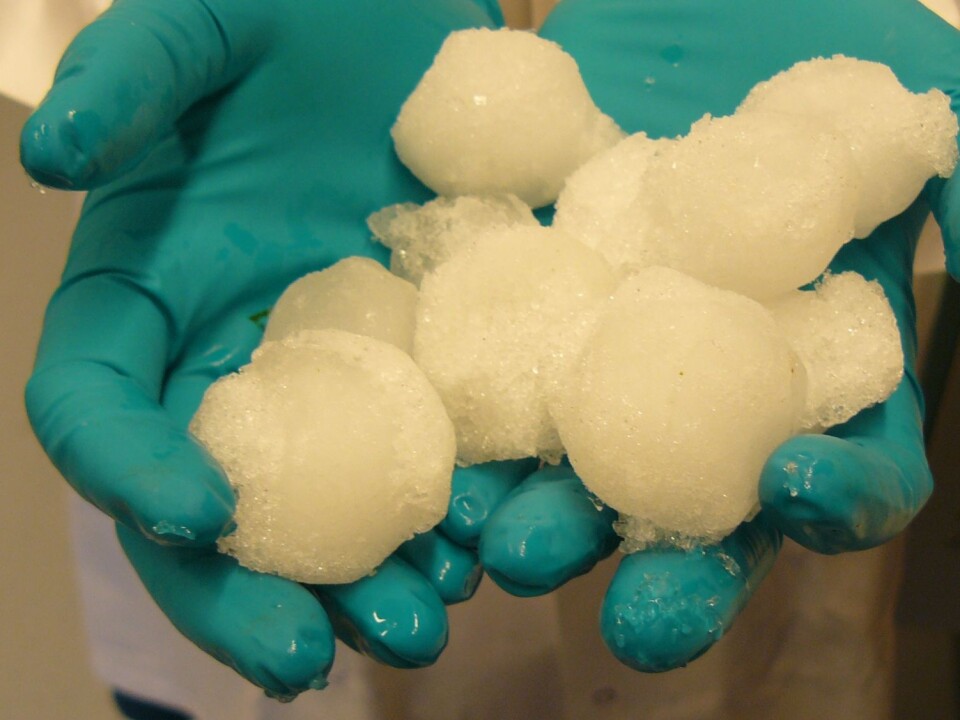
Storm clouds are full of live bacteria
Hailstones are brimming with microscopic life, but mostly from plants, new study reveals.
Hail does not only water the thirsty soil; it also carries new life in the shape of vivacious bacteria from other regions of the world.
The tiny organisms have led a luxurious life in the clouds, where they have found nourishment in the water droplets and their content of 3,000 different kinds of organic substances which are normally only found in soil.
Together, the water droplets and the soil particles have created living conditions so favourable for the bacteria that they have managed to reproduce.
This discovery is made by researchers from Aarhus University and is described in an article in the scientific journal PLoS One.

“The organic substances we have found occur in sufficiently large quantities to support bacterial growth. This turns the droplets into small dynamic universes, each of which supports certain forms of life,” says Tina Santl Temkiv, who conducted the new study as a PhD student together with her supervisor, senior researcher Ulrich Bay Gosewinkel, at Aarhus University’s Department of Environmental Science – Environmental Chemistry and Microbiology.
A friend collected hailstones in Slovenia
Temkiv’s discovery came about after having analysed hailstones, which a friend of hers collected in his homeland Slovenia. Every year, this country is plagued by many heavy hailstorms with hailstones the size of chicken eggs.
To ensure that the ice did not contain bacteria from the impact with the soil, Temkiv sterilised the ice surface. This caused part of the surface to melt away. But since the hailstones were very big, there was still plenty of ice left to analyse.
Together with Thorsten Dittmar of Oldenburg University in Germany, the water in the hailstones was analysed with a new analysing instrument, designed to recognise thousands of different substances.
The organic substances we have found occur in sufficiently large quantities to support bacterial growth. This turns the droplets into small dynamic universes, each of which supports certain forms of life.
Initially, they searched for dissolved particles in the water and found, almost without exception, dissolved organic matter that stems from soil. Then they went hunting for bacteria and here they mainly found species of plant origin.
Thunderstorm winds form hail
That hail contains bacteria and soil is not a big surprise when you take into account what actually goes on inside a thundercloud.
The cloud becomes violently turbulent as the pressure conditions generate heavy updraughts and downdraughts.
As a result, when a thundercloud is approaching, a heavy storm will arise, which draws air away from the Earth’s surface, creating a negative pressure.
This pattern could in principle be a coincidence. But it may also be an indication that the thunderclouds in one way or another classify the particles they suck up from the soil. We cannot say how this selection occurs, but it’s possible that the water droplets in the clouds create optimal living conditions for certain bacterial species, while having a toxic effect on others.
A thundercloud thus acts as a massive vacuum cleaner that stirs up dust, bacteria and leaves into the air and further up into the thundercloud. Due to the heavy turbulence inside the cloud, everything that’s stirred up blends in with the tiny water droplets in the cloud.
And when the contaminated water droplets are blown up towards the top of the cloud, the tiny particles will act as seeds that cause their host droplets to freeze.
As the hailstone is being tossed up and down by the cloud’s internal winds, it will grow until it’s so heavy that it falls out of the cloud and down to the Earth’s surface.
So it’s not all that unusual to find live bacteria and particles. What’s really surprising is that the hailstones contain live bacteria that almost exclusively come from plants, plus particles consisting of organic substances that mainly stem from the Earth’s soil.
“This pattern could in principle be a coincidence,” says Gosewinkel. “But it may also be an indication that the thunderclouds in one way or another classify the particles they suck up from the soil. We cannot say how this selection occurs, but it’s possible that the water droplets in the clouds create optimal living conditions for certain bacterial species, while having a toxic effect on others.”
Bacteria may keep the atmosphere clean
Bacteria do not necessarily die just because they are thrown up into the atmosphere. Bacteria from plants can apparently survive easily if they are fortunate enough to blunder into a water droplet that has some soil in it.
And if they’re really lucky, their host droplet is sufficiently hospitable for the bacteria to reproduce.
The bacteria in the air are not in a state of suspended animation, waiting passively to hit the ground again. Many of them are alive. And the amount of organic matter is so great that the bacteria should have plenty of nourishment to advance the species and occupy an entirely new location.
“Whether this is actually the case is something we intend to look further into in upcoming studies,” says Gosewinkel.
“If it turns out to be true, it could be very helpful with regards to the many problems we run into in our efforts to combat atmospheric pollution.”
---------------------------
Read the Danish version of this article at videnskab.dk
Translated by: Dann Vinther
Scientific links
- "Hailstones: a window into the microbial and chemical inventory of a storm cloud", PLoS ONE, DOI:10.1371/journal.pone.0053550
- "The microbial diversity of a storm cloud as assessed by hailstones", FEMS Microbiol Ecol (2012), DOI: 10.1111
- “High bacterial 16S rRNA gene diversity above the atmospheric boundary layer”, Aerobiologia, DOI: 10.1007/s10453-012-9250-6







